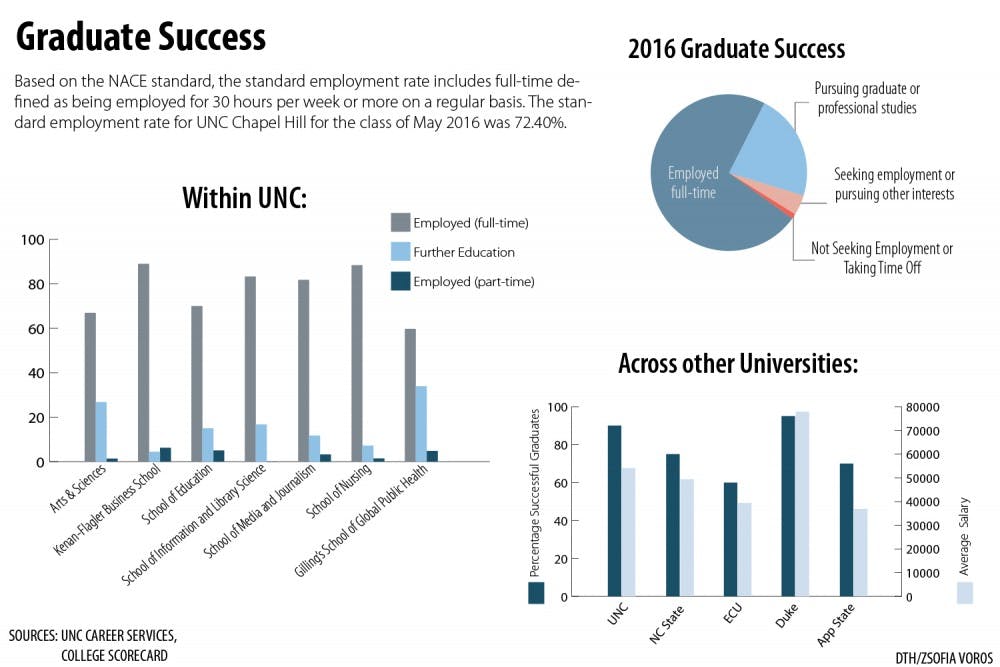For college students, perhaps nothing is as daunting as finding a full-time job. At UNC, University Career Services consistently reports approximately 90 percent of alumni as either pursuing graduate studies or being employed full-time six months after graduation.
So, how easy is it for students to get a job out of UNC? The answer could depend on the professional school you’re enrolled in.
According to University Career Services, the standard employment rate for the UNC class of May 2016 was 72.4 percent, but this varies across the different colleges within the University. The number of graduates still seeking employment ranged from zero percent at the School of Information and Library Science, to just 10 percent at the School of Education. This is lower than the national average of 16 percent of recent graduates still seeking employment, as reported by by the National Association of Colleges and Employers.
Best Colleges lists resume services, interview practice and job and internship search as three of the most important components to the quality of university career services.
Emily Strader, career counselor, said UNC services include these components as well as a myriad of different workshops to improve job skills and one-on-one appointments offered every weekday.
“We have hundreds of hours set aside just to see students, just to talk to them about their individual issues and what we can do to move them to their next step. To get from where they are to where they want to go next – because it’s a journey, it’s a process,” she said.
University Career Services helps all students regardless of major, but students can also find specialized resources at their individual professional schools.
David Vogel, director of career development and employee relations at Kenan-Flagler Business School, said his team begins working with admitted business school students from the time they’ve accepted their offer, and about 80 percent of students accept a full-time position by New Year’s Eve of their senior year.
“It’s not uncommon for our students to have four or five offers, and to be in a position where they have a number of options to choose from, and they tend to get their first choice,” Vogel said.




